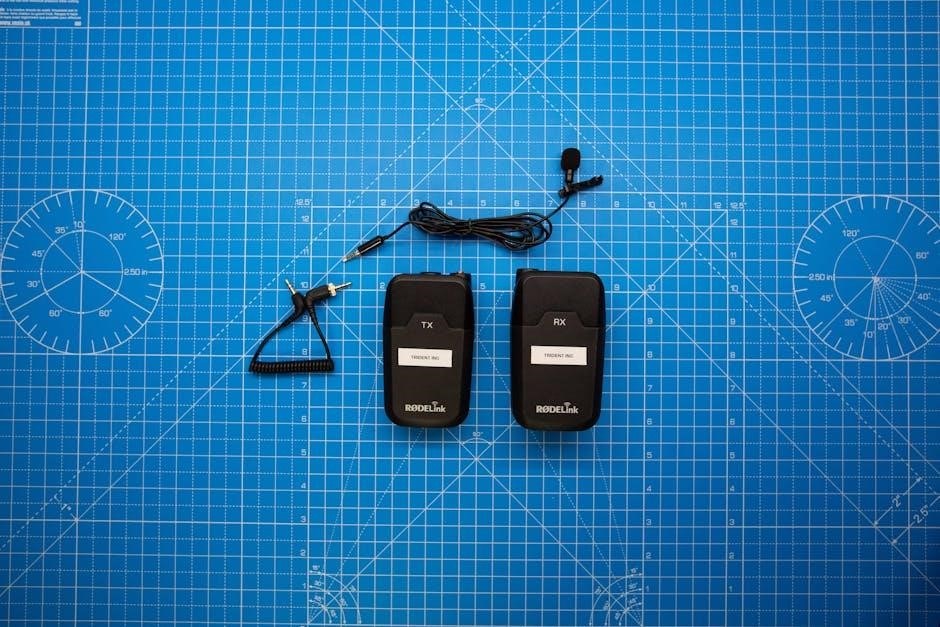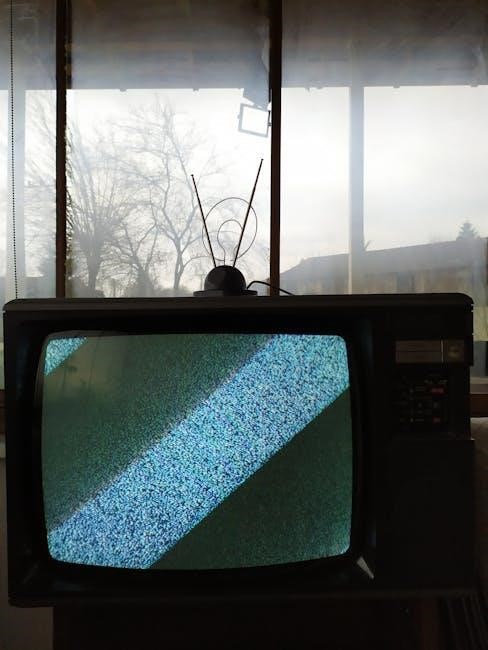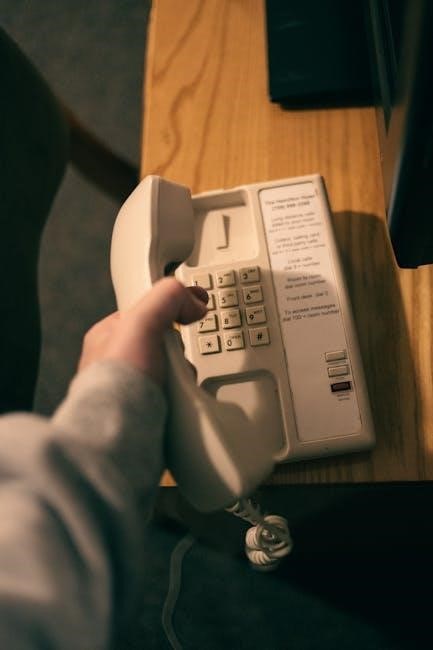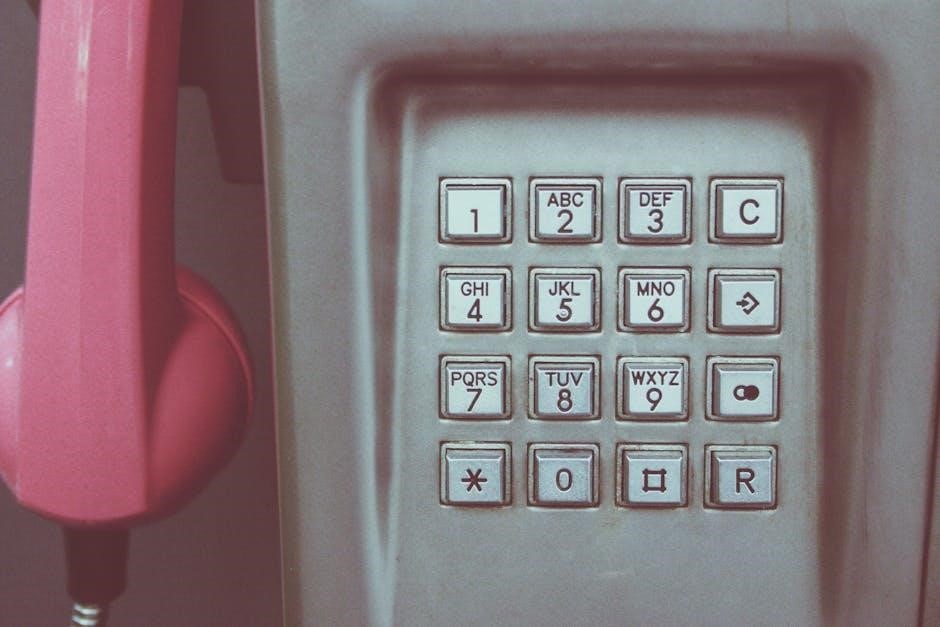
yamaha rx-v367 receiver manual
Yamaha RX-V367 Receiver Manual: A Comprehensive Guide
Welcome! This guide provides a comprehensive overview of the Yamaha RX-V367 receiver․ We will explore its features‚ setup‚ operation‚ and troubleshooting․ Access manuals‚ quick guides‚ and firmware updates for optimal performance;
The Yamaha RX-V367 is a 5․1 channel AV receiver designed to deliver a high-quality home theater experience․ This receiver supports 3D-Ready technology and 1080p HDMI compatibility‚ ensuring compatibility with modern video sources․ Featuring Yamaha’s YPAO sound optimization‚ it automatically calibrates the audio output to match your room’s acoustics‚ providing the best possible sound․

The RX-V367 includes SCENE functionality‚ allowing for quick selection of input sources and sound modes․ Its intuitive interface and comprehensive remote control make it easy to operate․ This guide will provide a detailed walkthrough of the receiver’s features‚ setup‚ and operation‚ empowering you to unlock its full potential․ Whether you’re a seasoned audiophile or a first-time receiver owner‚ this manual will serve as a valuable resource for maximizing your home entertainment setup․
Overview of Features and Capabilities
The Yamaha RX-V367 boasts several key features designed to enhance your audio and video experience․ Its 5․1 channel configuration provides immersive surround sound‚ bringing movies and games to life․ HDMI 1․4a support enables 3D video pass-through and 1080p resolution‚ ensuring compatibility with modern Blu-ray players and gaming consoles․
Yamaha’s proprietary YPAO (Yamaha Parametric Room Acoustic Optimizer) simplifies setup by automatically calibrating speaker settings based on your room’s unique acoustic properties․ The SCENE function allows for one-touch selection of preset input sources and sound modes‚ streamlining operation․ With its built-in FM/AM tuner‚ you can enjoy your favorite radio stations․ The RX-V367 also supports various audio formats‚ delivering clear and dynamic sound․ This receiver combines power‚ versatility‚ and ease of use‚ making it an excellent choice for home entertainment enthusiasts;
What’s Included in the Box
When you purchase the Yamaha RX-V367 receiver‚ you’ll find several essential components inside the box to get you started․ The primary item is‚ of course‚ the Yamaha RX-V367 AV receiver unit itself․ Alongside the receiver‚ you will find a remote control‚ allowing you to operate the device from a distance․ Batteries for the remote control are also typically included‚ so you can use it immediately․
To aid in setup‚ Yamaha provides a YPAO calibration microphone․ This microphone is crucial for the automatic speaker calibration process‚ optimizing the sound for your specific room․ An AM antenna and an FM antenna are also included‚ enabling you to receive radio signals․ Finally‚ you will find a CD-ROM containing the owner’s manual‚ providing detailed instructions and information about the receiver’s features and operation․ Make sure all items are present upon unboxing․

Getting Started: Setup and Connections
This section guides you through the initial setup․ Connect speakers‚ audio‚ and video sources․ Utilize HDMI and calibrate your system using the provided YPAO microphone for optimal audio performance․
Connecting Speakers and Audio Sources
Connecting your speakers correctly is crucial for achieving the desired surround sound experience with your Yamaha RX-V367․ Ensure proper wire connections to the receiver’s terminals‚ matching positive and negative polarities․ Secure connections prevent signal loss and guarantee optimal audio fidelity․
Identify the speaker configuration you intend to use – 5․1 channel surround sound is most common․ Connect the front left‚ front right‚ center‚ surround left‚ and surround right speakers to the designated terminals on the receiver’s rear panel․ Also‚ connect your subwoofer to the subwoofer pre-out․
For audio sources‚ use appropriate cables like RCA or optical cables․ Connect your CD player‚ turntable‚ or other audio devices to the corresponding input jacks․ Ensure the input selector on the receiver is set to match the connected source for proper audio playback․ You can also connect AM/FM antenna․
Double-check all connections before powering on the receiver to avoid potential damage or malfunctions․ Refer to the receiver’s manual for specific diagrams and instructions tailored to the Yamaha RX-V367 model․
Connecting Video Sources via HDMI
The Yamaha RX-V367 receiver utilizes HDMI connectivity for high-definition video and audio transmission․ HDMI cables offer a single-cable solution‚ simplifying connections and ensuring optimal signal quality․ The RX-V367 features multiple HDMI inputs and one output‚ allowing you to connect various video sources such as Blu-ray players‚ gaming consoles‚ and streaming devices․
Before connecting‚ ensure that both the receiver and the video source are powered off․ Connect one end of the HDMI cable to the HDMI output of your video source and the other end to one of the HDMI inputs on the back of the RX-V367․ Repeat this process for each video source you want to connect․
Connect the HDMI output of the RX-V367 to the HDMI input of your television or projector․ After making all connections‚ power on the TV and the receiver․ Use the receiver’s input selector to choose the correct HDMI input corresponding to the connected video source․ Ensure that the HDMI cables support the desired resolution and audio formats․
For optimal performance‚ use high-speed HDMI cables and consult the Yamaha RX-V367 manual for any specific compatibility requirements․
Using the Calibration Microphone (YPAO)

The Yamaha RX-V367 receiver features Yamaha Parametric Room Acoustic Optimizer (YPAO)‚ a system that automatically calibrates the receiver’s audio settings to match your room’s acoustics; YPAO uses a supplied calibration microphone to analyze the sound characteristics of your listening environment and adjust speaker levels‚ distances‚ and equalization settings accordingly․
To use YPAO‚ first‚ position the calibration microphone at your primary listening position․ Place the microphone on a tripod or stable surface at ear level․ Connect the microphone to the YPAO microphone input on the front of the RX-V367 receiver․ Navigate to the YPAO setup menu on the receiver’s on-screen display․
Follow the on-screen instructions to initiate the YPAO calibration process․ The receiver will emit a series of test tones from each speaker‚ and the microphone will capture the sound․ During the calibration‚ ensure the room is quiet․ Avoid any noise or movement that could interfere with the measurements․
Once completed‚ the receiver will display the calibration results․ Review the results and make any necessary adjustments manually․ The YPAO system optimizes the audio performance of your RX-V367 for your specific room․

Operating the Receiver
This section details the operation of the Yamaha RX-V367 receiver․ Learn about the front panel display‚ remote control functions‚ and how to tune FM/AM radio stations using both auto and manual preset options․
Understanding the Front Panel Display
The Yamaha RX-V367’s front panel display provides essential information about the receiver’s current status and settings․ Familiarizing yourself with the display elements is crucial for effective operation․ The main display area typically shows the selected input source‚ such as HDMI1‚ AV2‚ or Tuner․ Volume level is prominently displayed‚ allowing for quick adjustments․
Various indicator lights illuminate to signal specific modes or functions․ For instance‚ a Dolby Digital or DTS indicator confirms the active surround sound format․ The display also shows tuner frequency when using the radio function‚ along with preset station numbers if stored․ Understanding these indicators helps in monitoring the audio processing and signal input․
Navigation buttons are usually located near the display for menu access and setting adjustments․ These buttons‚ combined with the display‚ allow users to navigate receiver settings․ Pay attention to any error messages displayed‚ as they can indicate connection problems or system faults needing attention for troubleshooting․
Navigating the Remote Control
The Yamaha RX-V367 remote control is designed for intuitive operation of the receiver’s features․ Understanding the layout and function of each button is essential for convenient control․ The power button‚ typically located at the top‚ turns the receiver on and off․ Input selection buttons allow you to switch between different connected devices like Blu-ray players or game consoles․
Volume control buttons are prominently placed for easy adjustment of the audio level․ Mute button quickly silences the audio output․ The remote includes buttons for navigating the receiver’s menu system‚ allowing you to access and change settings․ Dedicated buttons for tuner operation enable easy channel selection and preset recall․
SCENE buttons provide one-touch access to pre-configured settings for various listening scenarios․ Surround mode buttons allow you to select the desired audio processing mode․ The remote also includes buttons for controlling connected devices․ Familiarizing yourself with the remote’s layout will greatly enhance your user experience․
Tuning FM/AM Radio Stations: Auto and Manual Preset
The Yamaha RX-V367 receiver offers two convenient methods for tuning into your favorite FM/AM radio stations: auto preset and manual preset․ Auto preset automatically scans the radio frequency bands and stores available stations into preset memory․ To use auto preset‚ select the tuner function on the receiver and navigate to the auto preset option in the menu․
The receiver will then scan for stations and store them sequentially․ Manual preset allows you to manually tune into specific frequencies and store them as presets․ To use manual preset‚ select the tuner function and use the tuning buttons to find the desired frequency․ Once found‚ press and hold the preset button and select a preset number to store the station․
You can store up to 40 FM/AM stations․ Both methods provide quick access to your preferred radio broadcasts․ Using presets eliminates the need to manually tune to stations each time‚ enhancing user convenience․ Remember to connect the provided AM and FM antennas to ensure optimal signal reception․

Advanced Features and Troubleshooting
Explore the advanced capabilities of the Yamaha RX-V367‚ including 3D-ready HDMI and SCENE functionality․ Find solutions to common issues and keep your receiver running smoothly with our troubleshooting tips․
3D-Ready and 1080p HDMI Compatibility
The Yamaha RX-V367 is designed to handle modern video formats‚ boasting full 3D-readiness and 1080p HDMI compatibility․ This ensures that you can enjoy the latest Blu-ray movies and video games with stunning clarity and depth․
With its HDMI 1․4a support‚ the receiver can pass through 3D signals from compatible devices‚ delivering an immersive viewing experience․ The 1080p compatibility ensures that high-definition video is displayed at its native resolution‚ without any downscaling or loss of detail․ The Yamaha RX-V367’s HDMI capabilities extend to Deep Color and x․v․Color‚ enhancing color accuracy and vibrancy․
This receiver features multiple HDMI inputs and one output‚ allowing you to connect various devices such as Blu-ray players‚ gaming consoles‚ and set-top boxes․ The HDMI connections also support Audio Return Channel (ARC)‚ simplifying the connection to your TV and reducing the number of cables required․
To fully utilize the 3D and 1080p capabilities‚ ensure that all your connected devices and cables are also compatible․ Properly configured HDMI settings will unlock the full potential of your home theater system․
SCENE Functionality Explained
The Yamaha RX-V367 features the SCENE functionality‚ designed to simplify operation and provide quick access to frequently used settings․ SCENE buttons allow you to instantly configure the receiver for various activities‚ such as watching movies‚ listening to music‚ or playing games․
Each SCENE button can be programmed with specific input selections‚ surround modes‚ and volume levels․ This eliminates the need to manually adjust multiple settings each time you switch between activities․ The RX-V367 offers multiple SCENE presets that can be customized to your preferences․
To program a SCENE button‚ simply select the desired input source‚ audio settings‚ and volume level․ Then‚ press and hold the SCENE button you wish to program for a few seconds until the receiver confirms the setting․ Once programmed‚ pressing the SCENE button will automatically recall all the saved settings․
The SCENE function enhances user experience by streamlining the setup process and providing one-touch access to your favorite entertainment scenarios․ It makes operating the receiver simple and intuitive‚ even for users unfamiliar with home theater systems․ Enjoy seamless transitions between different activities with the SCENE functionality․
Troubleshooting Common Issues
Encountering issues with your Yamaha RX-V367 receiver is not uncommon․ This section provides troubleshooting steps for some frequently reported problems․ If you experience no sound‚ ensure the speakers are properly connected and the correct input source is selected․
If there’s no picture‚ verify the HDMI connections and source resolution․ For remote control issues‚ check the batteries and ensure there’s a clear line of sight to the receiver․ If the receiver is not powering on‚ confirm the power cord is securely plugged in and the outlet is functioning․
In case of distorted sound‚ examine speaker wires for damage and adjust the volume levels․ If the YPAO calibration fails‚ ensure the microphone is correctly positioned and there’s minimal ambient noise․ For FM/AM radio problems‚ check the antenna connection and try different locations․
If these steps don’t resolve the issue‚ consult the owner’s manual or Yamaha’s support website for further assistance․ Updating the firmware can also address some performance problems․ When all else fails‚ contact a qualified technician for repair services․

Manual and Documentation
Access the Yamaha RX-V367’s owner’s manual for detailed instructions and specifications․ Find quick reference guides for essential operations․ Explore service manuals and schematics for advanced troubleshooting and repairs․
Accessing the Owner’s Manual (PDF Download)
The Yamaha RX-V367 owner’s manual is your primary resource for in-depth information regarding all aspects of the receiver․ This comprehensive document covers everything from basic setup and connections to advanced features and troubleshooting․
To access the owner’s manual‚ a PDF version is readily available for download․ This digital format allows you to easily search for specific topics‚ zoom in on diagrams‚ and print out relevant sections as needed․ You can typically find the PDF on Yamaha’s official website or through various online manual repositories․
The owner’s manual provides detailed explanations of the receiver’s various functions‚ including input/output options‚ surround sound settings‚ and the YPAO automatic calibration system․ It also includes step-by-step instructions for connecting your audio and video components‚ configuring the receiver for optimal performance‚ and troubleshooting common issues․ Keep this manual handy for quick reference and to fully utilize the capabilities of your Yamaha RX-V367 receiver․

Quick Reference Guide Availability
For users seeking a concise overview of the Yamaha RX-V367 receiver’s essential functions‚ a Quick Reference Guide is often available․ This guide serves as a handy companion to the more detailed Owner’s Manual‚ providing a streamlined approach to basic setup and operation․
The Quick Reference Guide typically includes simplified diagrams and instructions for connecting speakers‚ setting up audio and video sources‚ and navigating the receiver’s main menus․ It highlights key features such as the SCENE functionality and basic remote control operation․
While the Owner’s Manual provides in-depth explanations‚ the Quick Reference Guide focuses on the most commonly used features‚ making it ideal for users who prefer a more direct and less technical approach․ This guide can often be found alongside the Owner’s Manual on Yamaha’s website or included in the receiver’s original packaging․ It’s a valuable resource for quickly getting your Yamaha RX-V367 up and running․
Service Manual and Schematics

For advanced users‚ technicians‚ or anyone undertaking repairs‚ the Service Manual and Schematics for the Yamaha RX-V367 are invaluable resources․ These documents delve into the receiver’s internal workings‚ providing detailed diagrams and technical specifications․
The Service Manual typically includes troubleshooting procedures‚ component layouts‚ and voltage measurements‚ enabling users to diagnose and repair potential issues․ Schematics offer a comprehensive map of the receiver’s circuitry‚ illustrating the connections between various components․
Accessing the Service Manual and Schematics may require searching online resources or contacting Yamaha directly․ These documents are typically intended for qualified service personnel due to the complexity of the information they contain․ Attempting repairs without the necessary knowledge and experience can be hazardous and may void the warranty․
However‚ for those with the appropriate technical expertise‚ the Service Manual and Schematics provide the necessary tools to maintain and repair their Yamaha RX-V367 receiver․

Additional Resources
Explore further assistance for your Yamaha RX-V367․ Access Yamaha support‚ downloads‚ and firmware updates․ Discover Yamaha Music ID registration for enhanced features and product support‚ ensuring long-term enjoyment․
Yamaha Support and Downloads
Access comprehensive support and download resources for your Yamaha RX-V367 receiver․ The official Yamaha website offers a wealth of information‚ including frequently asked questions‚ troubleshooting guides‚ and detailed specifications․ Locate and download the owner’s manual in PDF format for easy reference‚ providing complete instructions on setup‚ operation‚ and advanced features․
Explore available firmware updates to ensure optimal performance and compatibility with the latest devices․ Yamaha’s support section includes drivers‚ software‚ and utilities to enhance your receiver’s functionality․ Check for service manuals and schematics‚ invaluable resources for advanced users and technicians performing repairs or maintenance․ Benefit from Yamaha’s extensive online knowledge base‚ offering solutions to common issues and expert advice․
Utilize the product registration option to receive updates‚ special offers‚ and personalized support․ Engage with the Yamaha community forums to connect with other RX-V367 owners‚ share experiences‚ and find solutions to specific problems․ The Yamaha support portal is your central hub for all RX-V367 related assistance․
Firmware Updates and Installation
Keeping your Yamaha RX-V367 receiver’s firmware up-to-date is crucial for optimal performance and compatibility․ Firmware updates often include enhancements‚ bug fixes‚ and support for new technologies․ Regularly check the Yamaha support website for available updates specific to your RX-V367 model․ Download the latest firmware file and carefully follow the provided installation instructions․
The update process typically involves transferring the firmware file to a USB drive and connecting it to the receiver․ Access the receiver’s setup menu to initiate the firmware update process․ Ensure a stable power supply during the update to prevent interruptions․ The receiver will guide you through the installation‚ displaying progress indicators on the screen․
After the update is complete‚ the receiver may automatically restart․ Verify the new firmware version in the system information menu․ Always read the release notes accompanying the update to understand the changes and improvements․ Incorrect firmware installation can cause malfunctions‚ so adhere strictly to Yamaha’s instructions․ Before initiating an update‚ back up your receiver settings if possible․
Yamaha Music ID Registration
Yamaha Music ID Registration isn’t directly related to the RX-V367 receiver‚ as the provided context suggests․ Music ID typically pertains to services or platforms where Yamaha offers music-related content or features․ It’s possible Yamaha has a general account system for their various offerings‚ and music-related ones use the Music ID label․
If you’re encountering references to Yamaha Music ID while using the RX-V367‚ it might be in conjunction with other Yamaha devices or services you own․ It’s unlikely the receiver itself directly requires or utilizes this registration․ This registration might be necessary to access certain Yamaha services or online music platforms if the receiver has network capabilities (which the RX-V367 may lack)․
Consult the specific documentation or website where you encountered the Yamaha Music ID prompt for clarification․ Look for details on what benefits the registration provides and whether it is essential for using the features you intend to access․ If you’re still unsure‚ contact Yamaha support for assistance with their account registration process․ They can clarify whether the registration applies to your RX-V367 usage․






